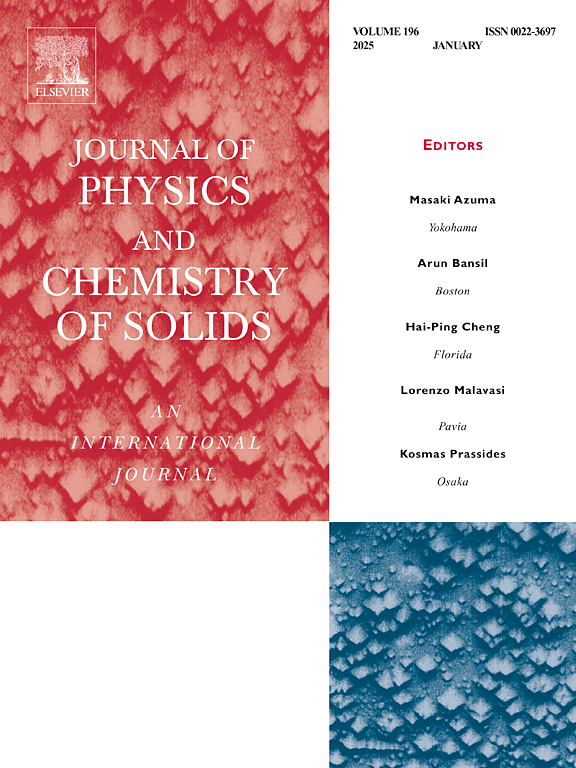插层 Fe0.5-xTixTiS2 中具有大矫顽力场的金属铁磁性
IF 4.3
3区 材料科学
Q2 CHEMISTRY, MULTIDISCIPLINARY
引用次数: 0
摘要
本文章由计算机程序翻译,如有差异,请以英文原文为准。
Metallic ferromagnetism with large coercive field in intercalated Fe0.5-xTixTiS2
Among the transition metal dichalcogenides, iron-intercalated TiS2 exhibits antiferromagnetism with a large coercive field at the metamagnetic transition when y ≈ 0.5 in FeyTiS2. This composition region marks the transition in the ground state from an antiferromagnetic metal to ferromagnetic insulator. Nonetheless, as y increases near y = 0.5 in FeyTiS2, the charge carrier concentration increases, going with Fe substitution for Ti in the TiS2 slabs (y > 0.5) that hinders a ferromagnetic metal to be set. To avoid it, a series of Fe0.5-xTixTiS2 samples (0≤x ≤ 0.075) was studied. Seebeck measurements confirm that despite the x increase, the charge carrier concentration remains constant. As a result, the T-dependent magnetic susceptibility and electrical resistivity reveal that a change from antiferromagnetic metal (x = 0.00) to a ferromagnetic metal (x > 0.00) can be induced, with a transition temperature decreasing from TN = 140K (x = 0.00) to TC = 130K (x = 0.075). This metallicity increase in the ferromagnetic state reflects the reduced charge scattering responsible for the peak at TC of the negative magnetoresistance. Both very large Hc values, such as μ0Hc = 7.2T at 5K for Fe0.425Ti0.075TiS2, and magnetization jumps at 2K in the M(H) loops are observed.
求助全文
通过发布文献求助,成功后即可免费获取论文全文。
去求助
来源期刊
CiteScore
7.80
自引率
2.50%
发文量
605
审稿时长
40 days
期刊介绍:
The Journal of Physics and Chemistry of Solids is a well-established international medium for publication of archival research in condensed matter and materials sciences. Areas of interest broadly include experimental and theoretical research on electronic, magnetic, spectroscopic and structural properties as well as the statistical mechanics and thermodynamics of materials. The focus is on gaining physical and chemical insight into the properties and potential applications of condensed matter systems.
Within the broad scope of the journal, beyond regular contributions, the editors have identified submissions in the following areas of physics and chemistry of solids to be of special current interest to the journal:
Low-dimensional systems
Exotic states of quantum electron matter including topological phases
Energy conversion and storage
Interfaces, nanoparticles and catalysts.

 求助内容:
求助内容: 应助结果提醒方式:
应助结果提醒方式:


